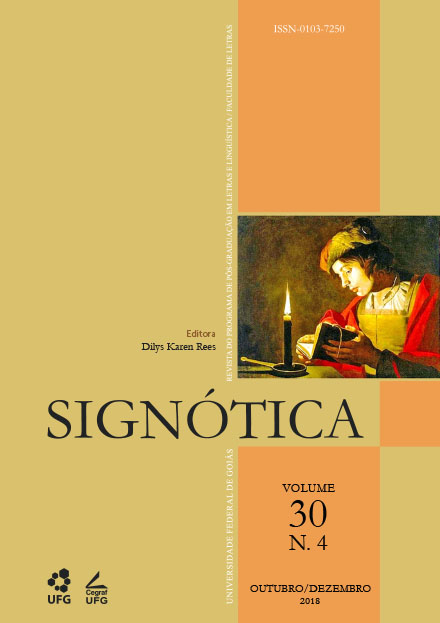O estudo dos grupos nominais em textos na língua inglesa: um enfoque sistêmico-funcional
DOI:
https://doi.org/10.5216/sig.v30i4.50140Palavras-chave:
Grupos nominais. Gênero. Semântica. LSF.Resumo
Este artigo objetiva a compreensão do grupo nominal (GN) em inglês de uma perspectiva não apenas morfossintática, mas também semântica. Trata-se de uma pesquisa que, por meio da Linguística Sistêmico-Funcional de Halliday (2004), visa auxiliar a compreensão e, em alguns casos a tradução, de termos e frases da língua inglesa, ou seja, os GNs presentes em certos gêneros textuais. A pesquisa procura esclarecer a constituição dos GNs para que melhor se possa entender a relação da estrutura dos GNs e suas funções nos gêneros escrita acadêmica e textos publicitários da internet, pois espera-se que esses grupos nominais tenham uma constituição distinta em ambos os gêneros em questão. O corpus da pesquisa é composto por 50 GNs em inglês, sendo 25 para cada gênero, número que nos parece suficiente para observar como esses grupos se comportam. Observamos que, dependendo do gênero, pode haver diferenças na constituição dos GNs.
Downloads
Downloads
Publicado
Como Citar
Edição
Seção
Licença
Autoras(es) autorizam a Signótica a publicar artigo, caso seja aceito, firmando sua contribuição como original e não submetida a outra editora para publicação. Em caso de aceite e publicação, artigos da Signótica possuem licença Creative Comons CC-BY.






1.png)





